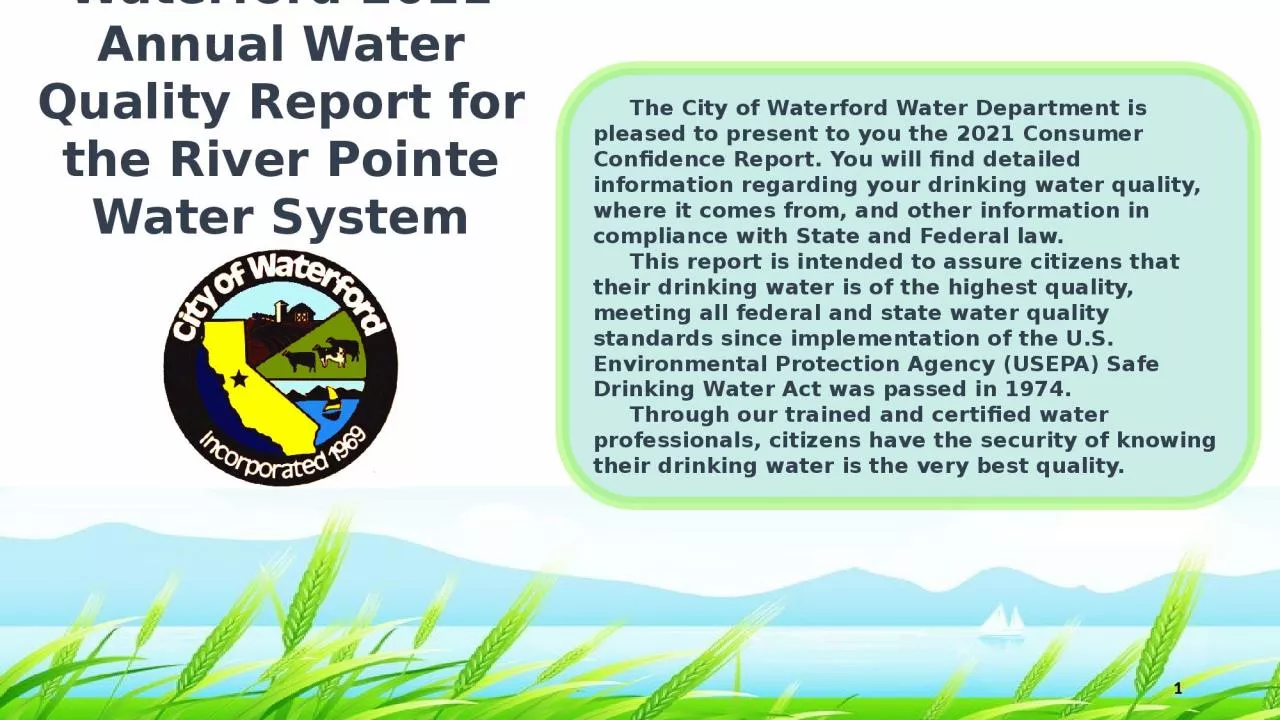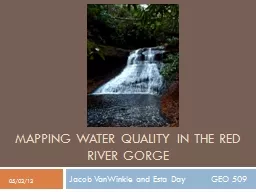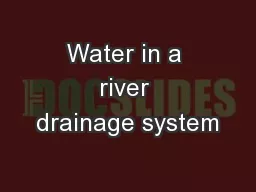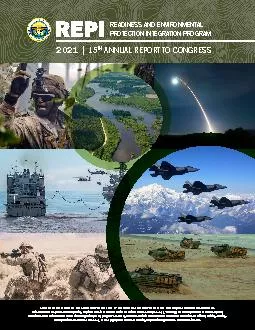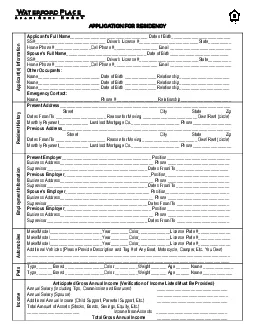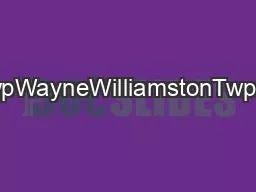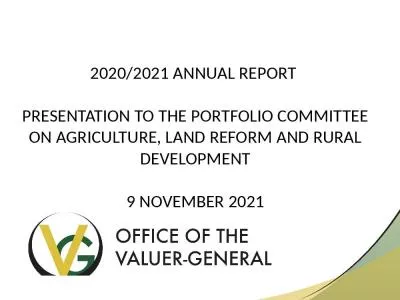PPT-Waterford 2021 Annual Water Quality Report for the River Pointe Water System 5010042
Author : evans | Published Date : 2023-09-25
The City of Waterford Water Department is pleased to present to you the 2021 Consumer Confidence Report You will find detailed information regarding your drinking
Presentation Embed Code
Download Presentation
Download Presentation The PPT/PDF document "Waterford 2021 Annual Water Quality Repo..." is the property of its rightful owner. Permission is granted to download and print the materials on this website for personal, non-commercial use only, and to display it on your personal computer provided you do not modify the materials and that you retain all copyright notices contained in the materials. By downloading content from our website, you accept the terms of this agreement.
Waterford 2021 Annual Water Quality Report for the River Pointe Water System 5010042: Transcript
Download Rules Of Document
"Waterford 2021 Annual Water Quality Report for the River Pointe Water System 5010042"The content belongs to its owner. You may download and print it for personal use, without modification, and keep all copyright notices. By downloading, you agree to these terms.
Related Documents

